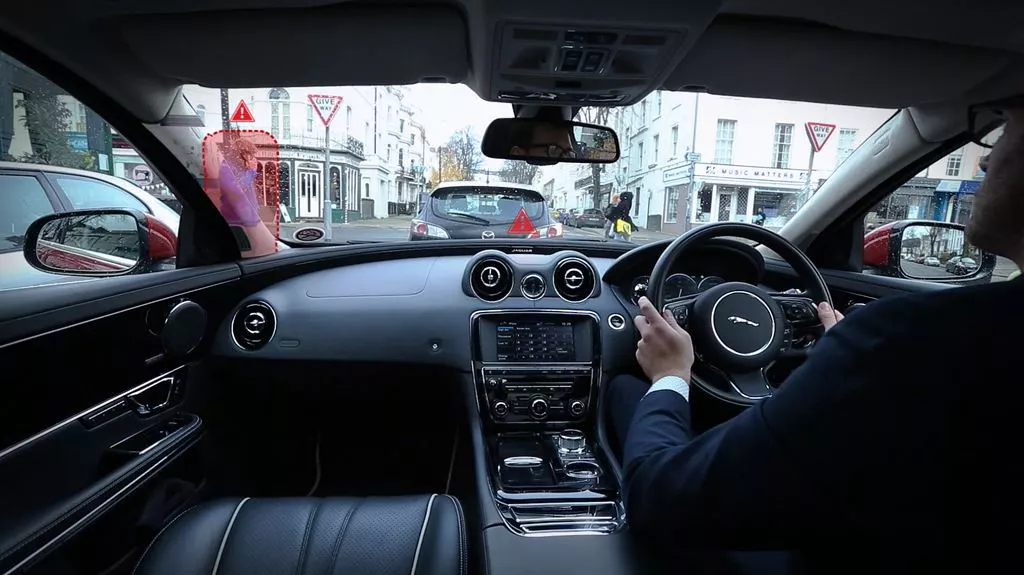Having shown off its transparent bonnet concept earlier this year, Jaguar Land Rover is now looking into how to make other parts of its cars disappear. The firm is researching how to let drivers see through a vehicle's roof support pillars, while also developing a ghost car navigation system.
The "360 Virtual Urban Windscreen" and "Follow-Me Ghost Car Navigation" system are two of a number of technologies aimed at improving safety that Jaguar Land Rover says it is developing. By effectively making the roof support pillars in a vehicle transparent, the driver is given better visibility all around the vehicle.
The pillars are not, in fact, transparent. They use screens embedded on their inside edges to display video feeds taken from outside the car. In this way it is possible to show the driver what the pillars would otherwise be obscuring from their view, such as pedestrians and cyclists.

Jaguar Land Rover suggests that the technology will be active only when necessary. For example, when a driver is detected checking their blind spot prior to changing lanes, the screen in the rear pillars could be switched on. When not required, they could appear just like today's typical roof support pillars.
It is also suggested that the pillars could be used in conjunction with a head-up display. When a pedestrian is detected crossing the road, for example, the pillars may become active to ensure the driver can see the individual. When they move into view through the windscreen, a red circle projected onto the inside of the windscreen can surround the individual and track their path. If the car is connected to the internet, other information displayed on the head-up display could include things like petrol station pricing and parking space availability.
This use of the windscreen as a head-up display is aimed at helping to minimize the amount of time that a driver must look away from the road.
This approach is also taken with the Follow-Me Ghost Car Navigation system. Unlike other navigation systems that display a map and route on a screen as well as providing audio directions, the system projects the image of a car onto the inside of the windscreen for the driver to follow turn-by-turn.
The video below provides an introduction to Jaguar Land Rover's research in these areas.
Source: Jaguar Land Rover






